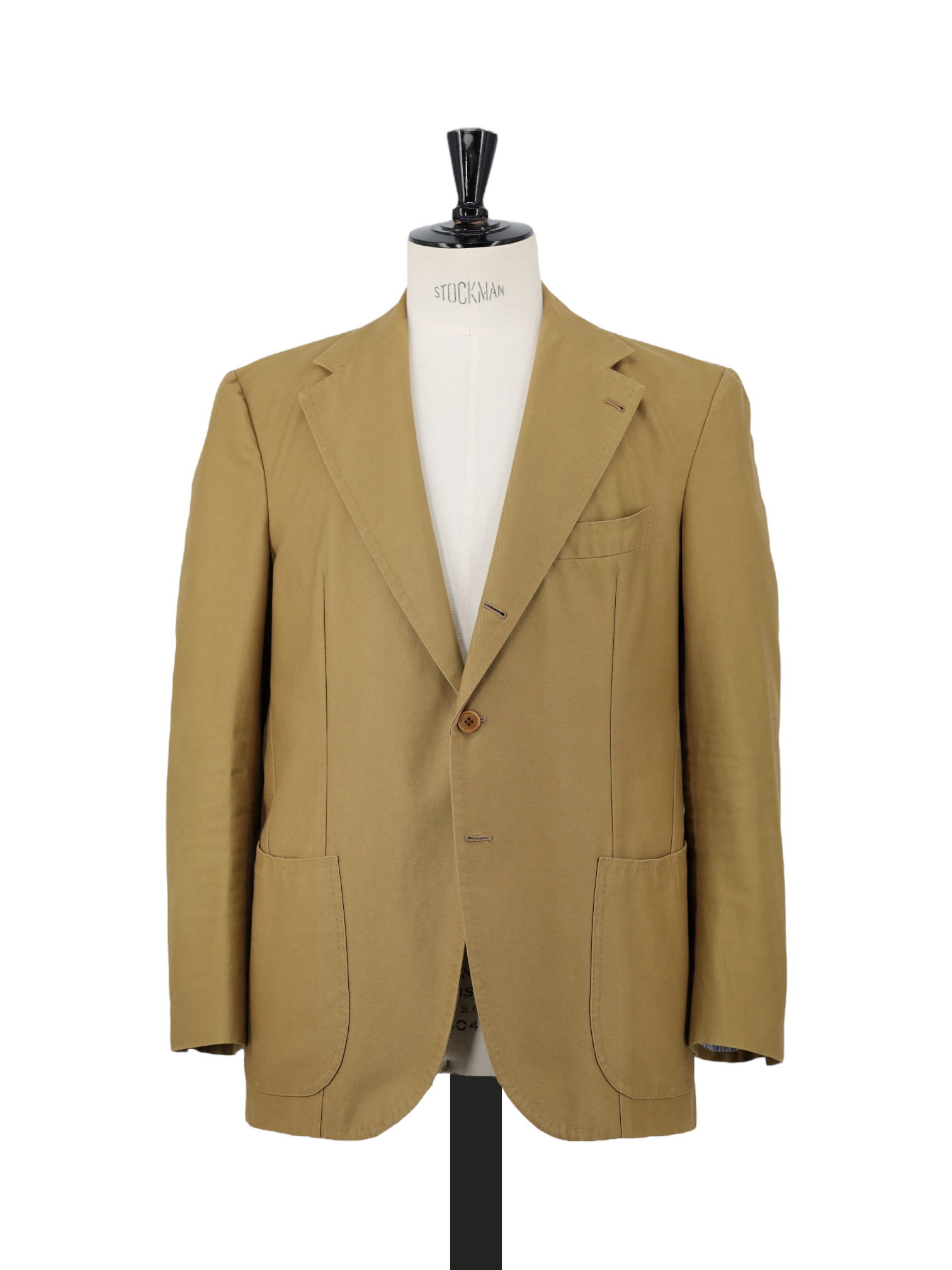
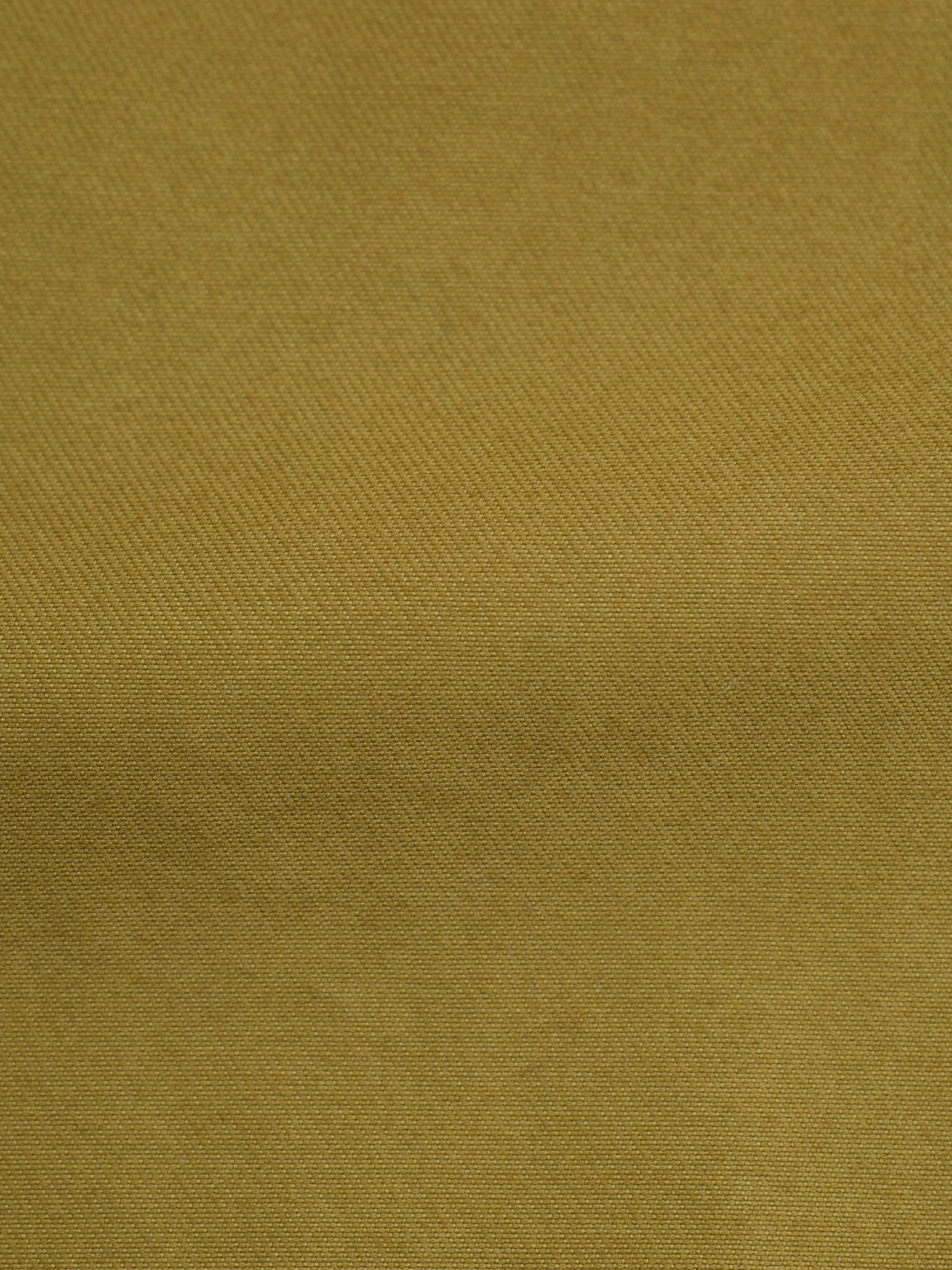
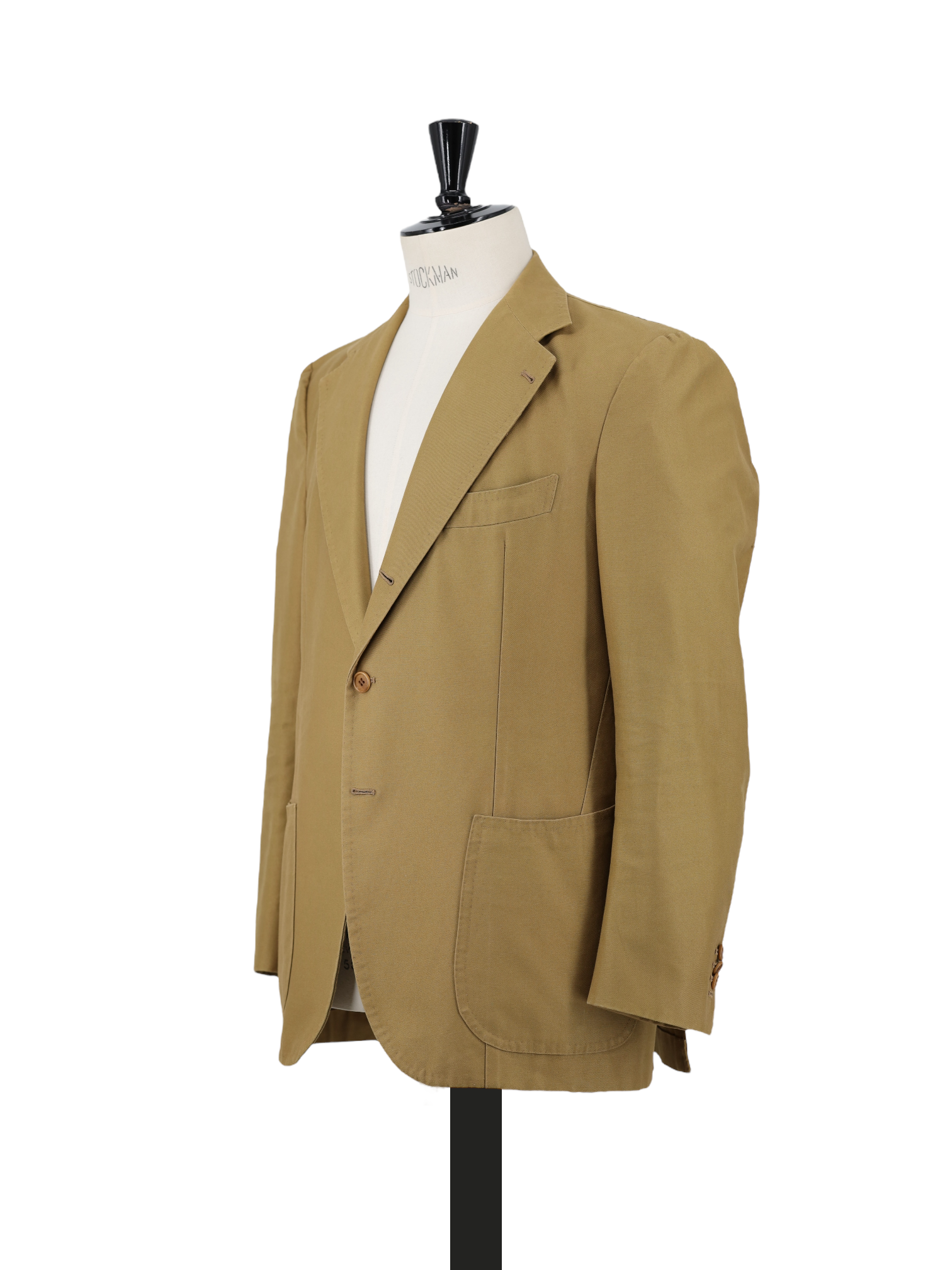
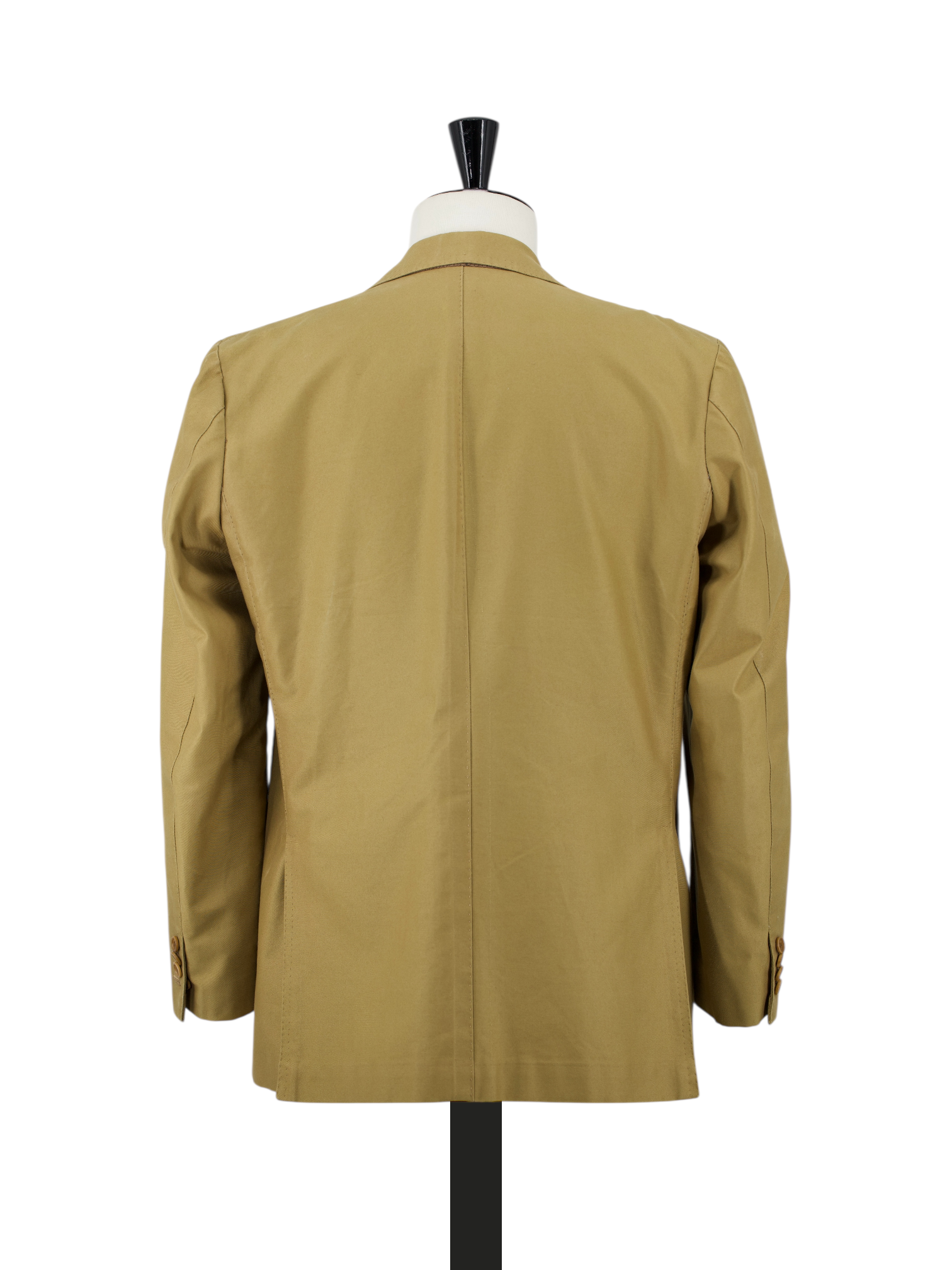
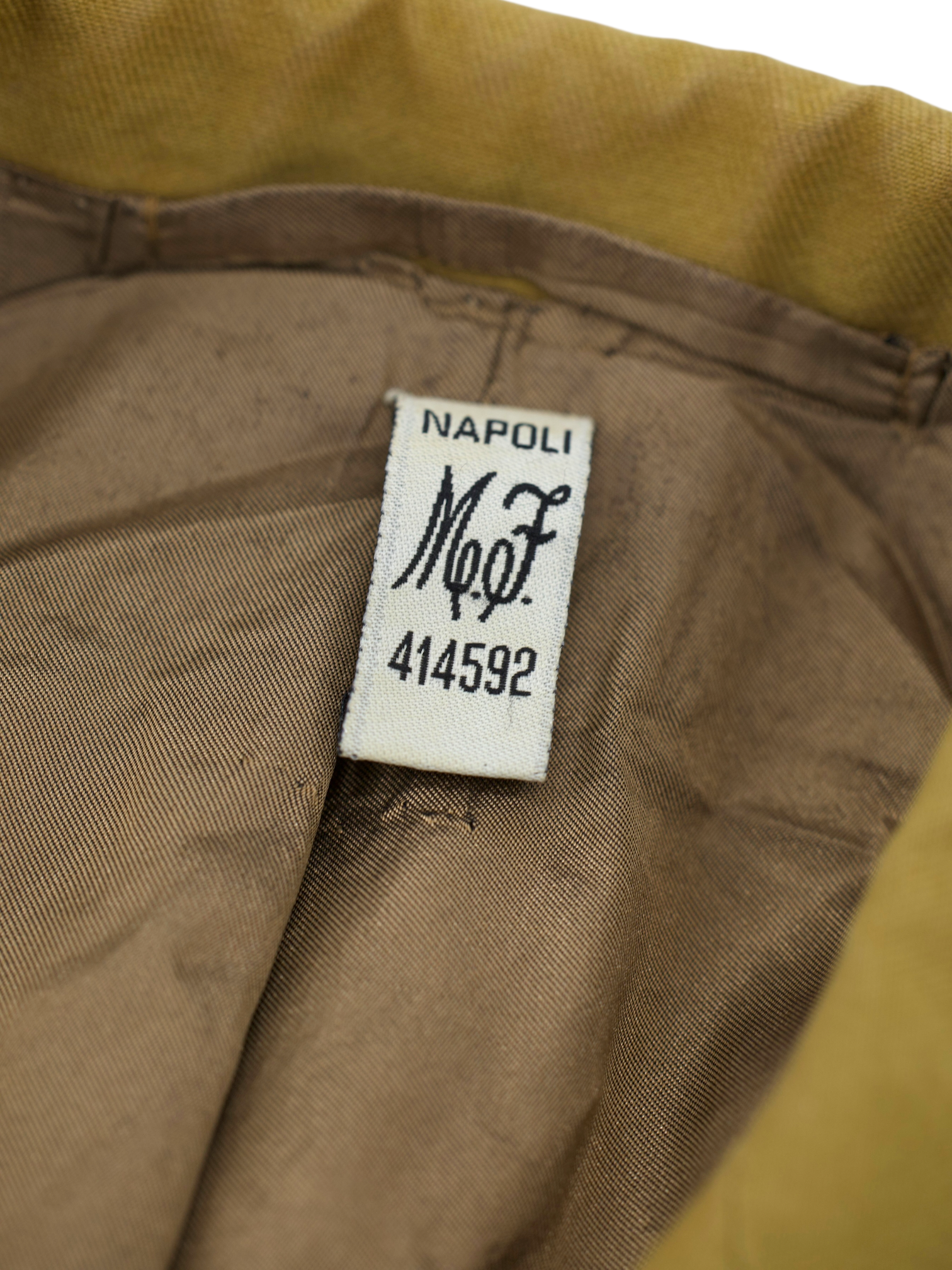
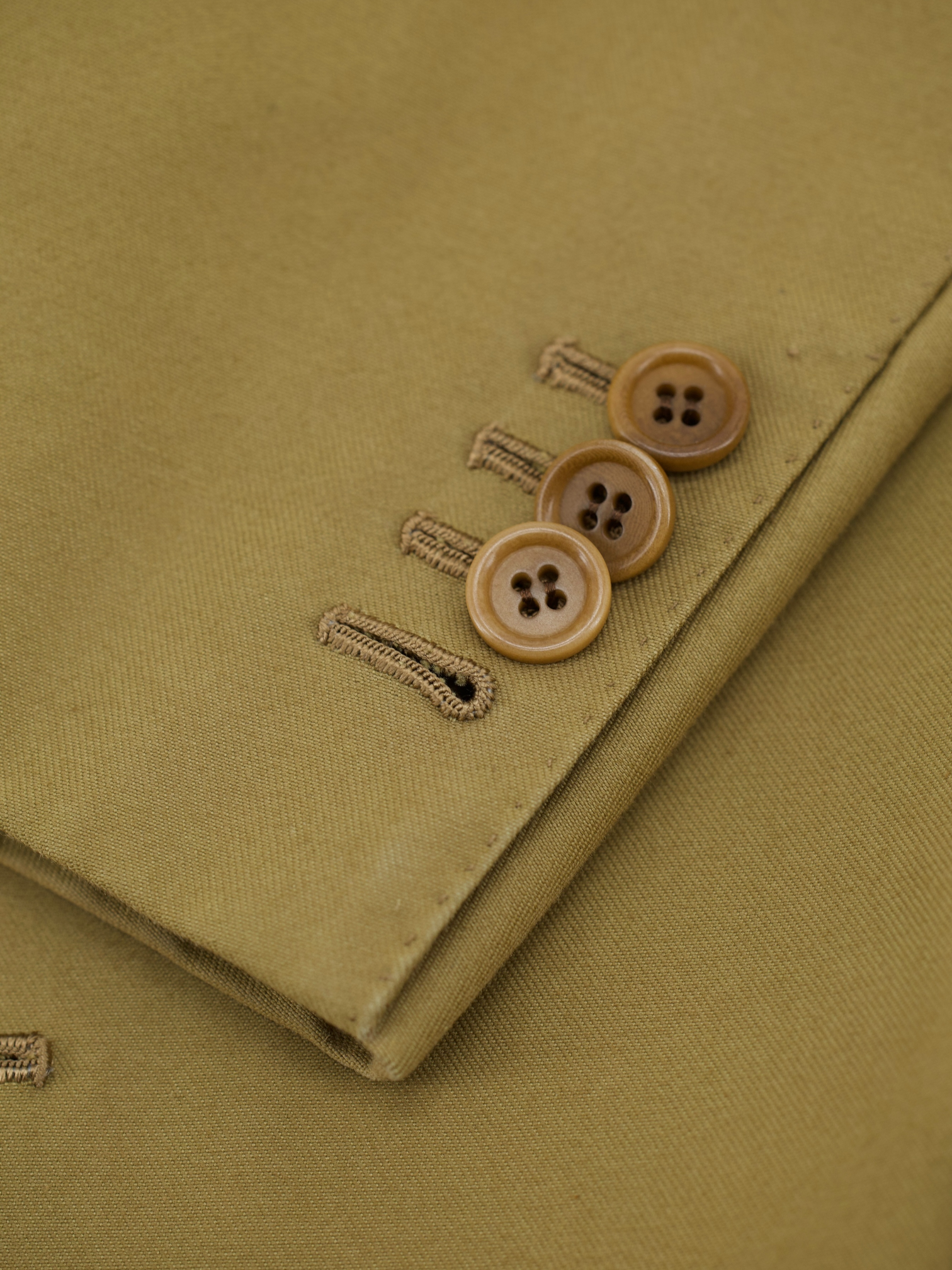
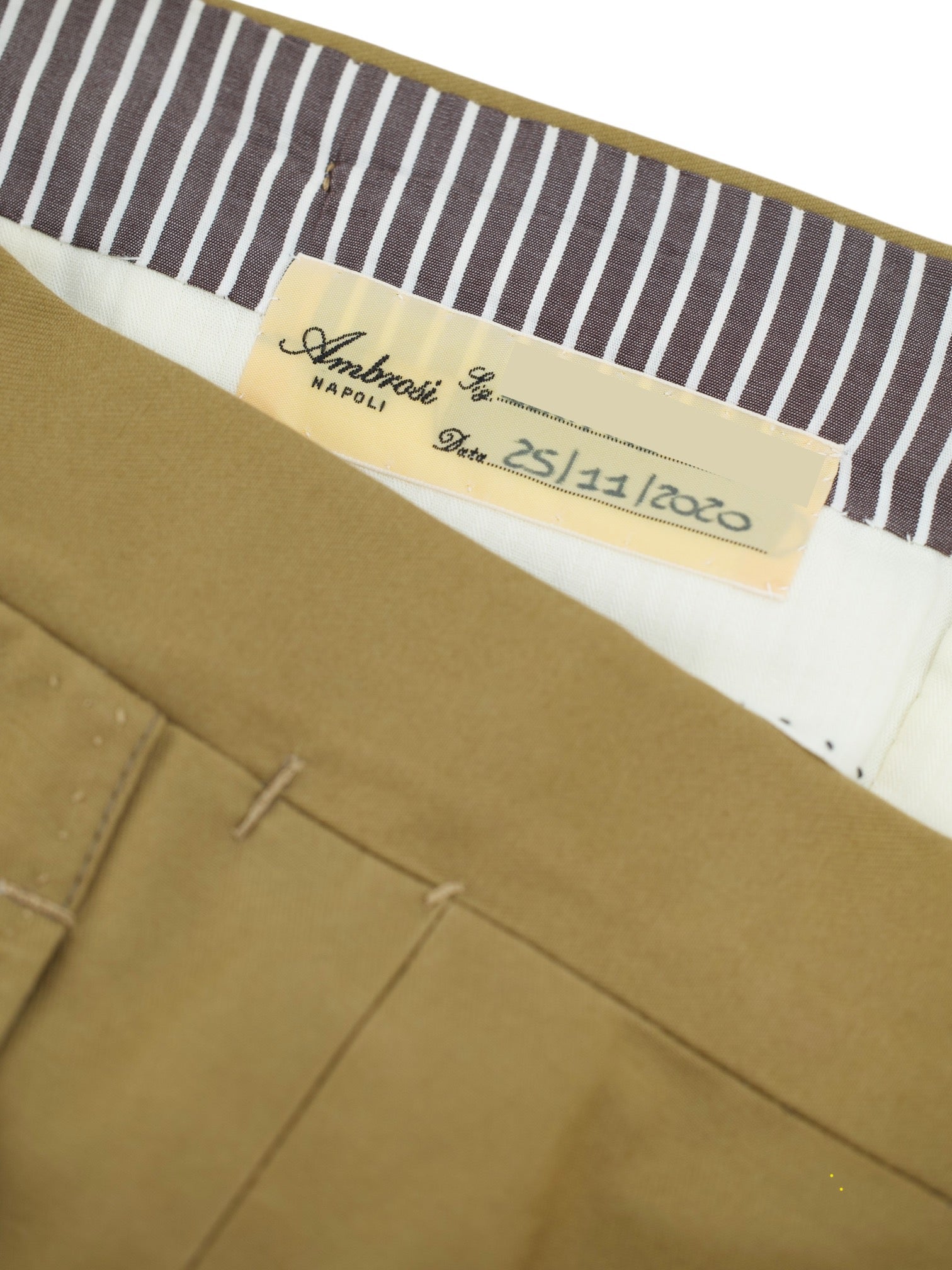
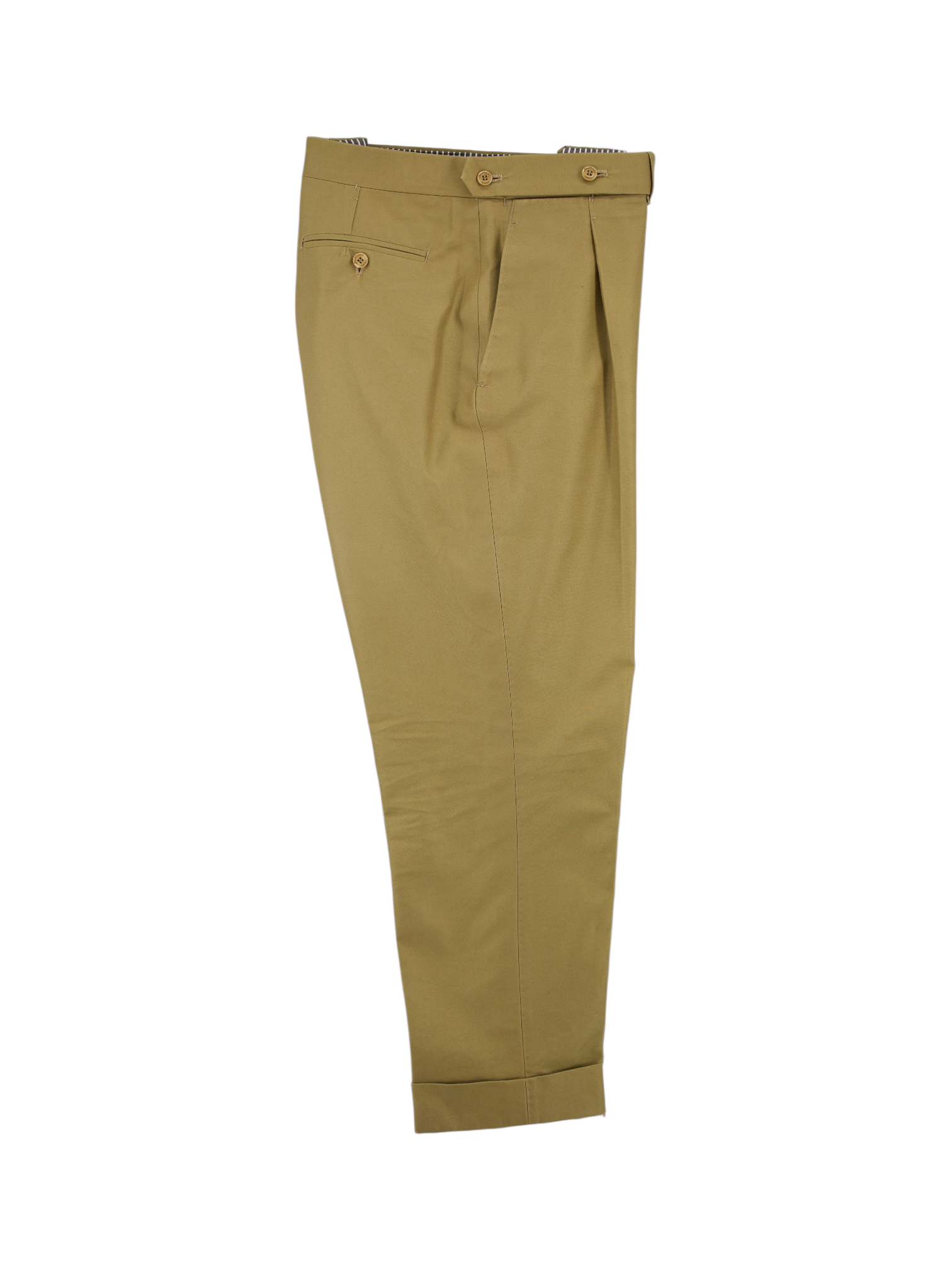
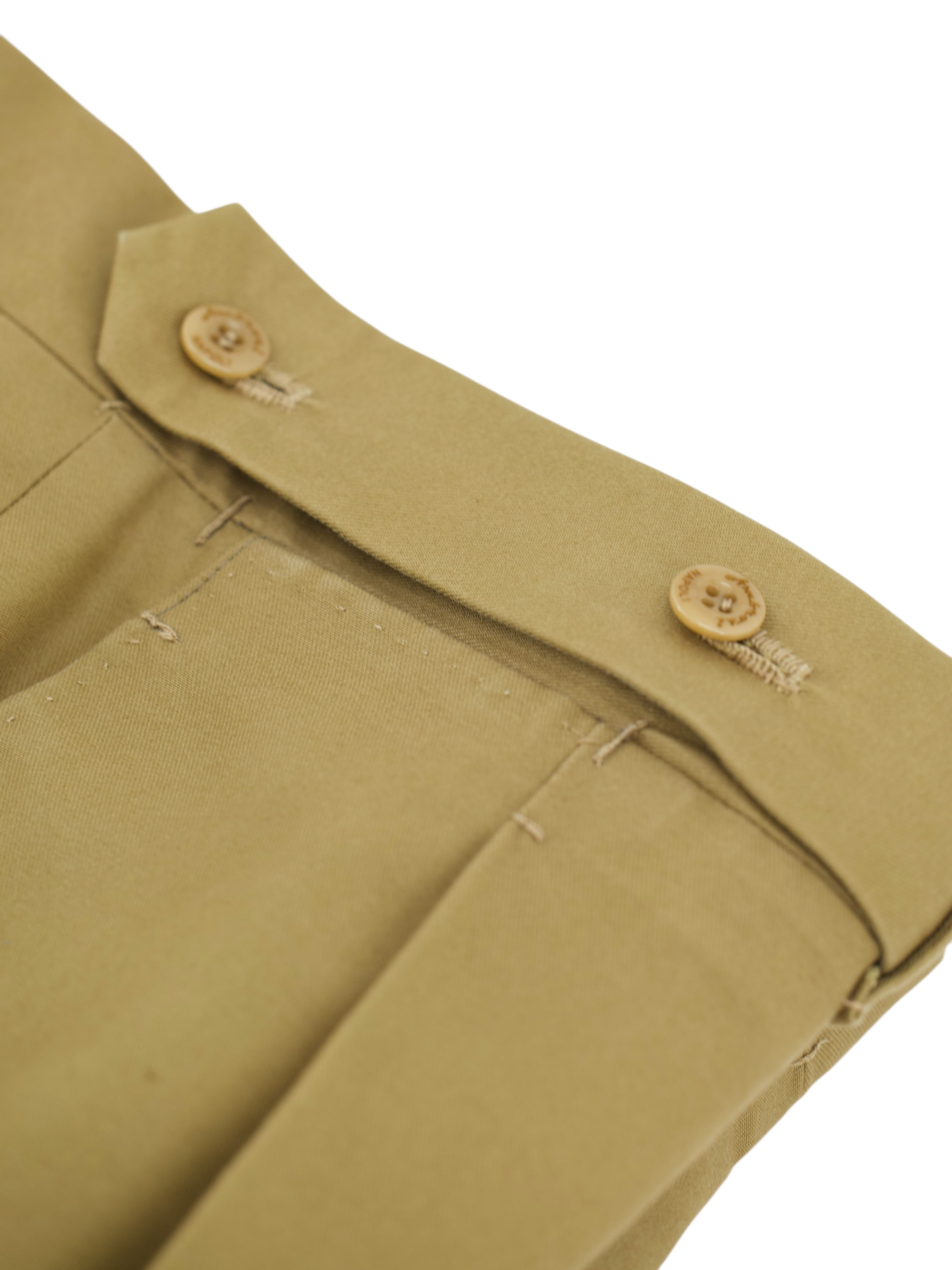
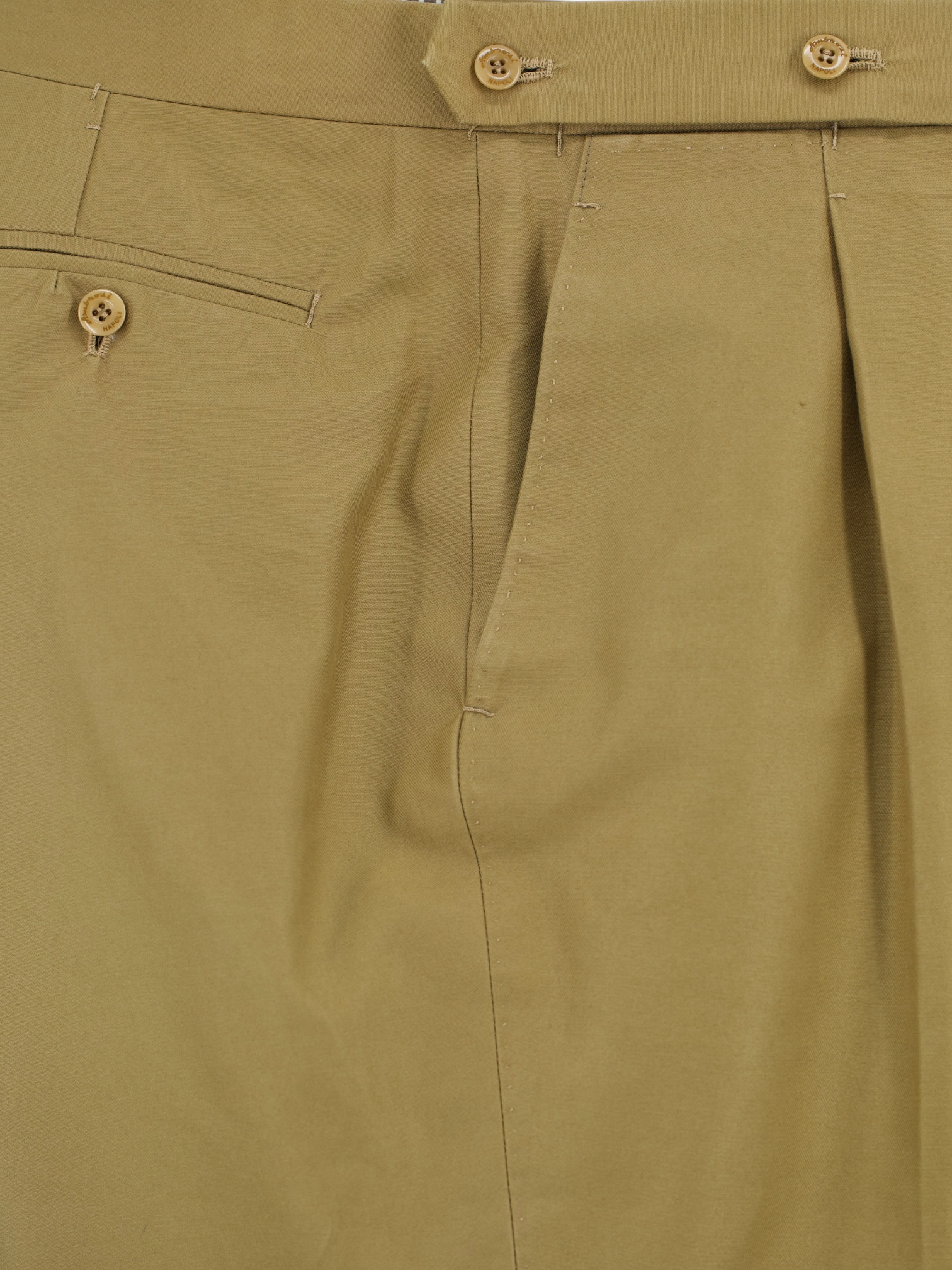
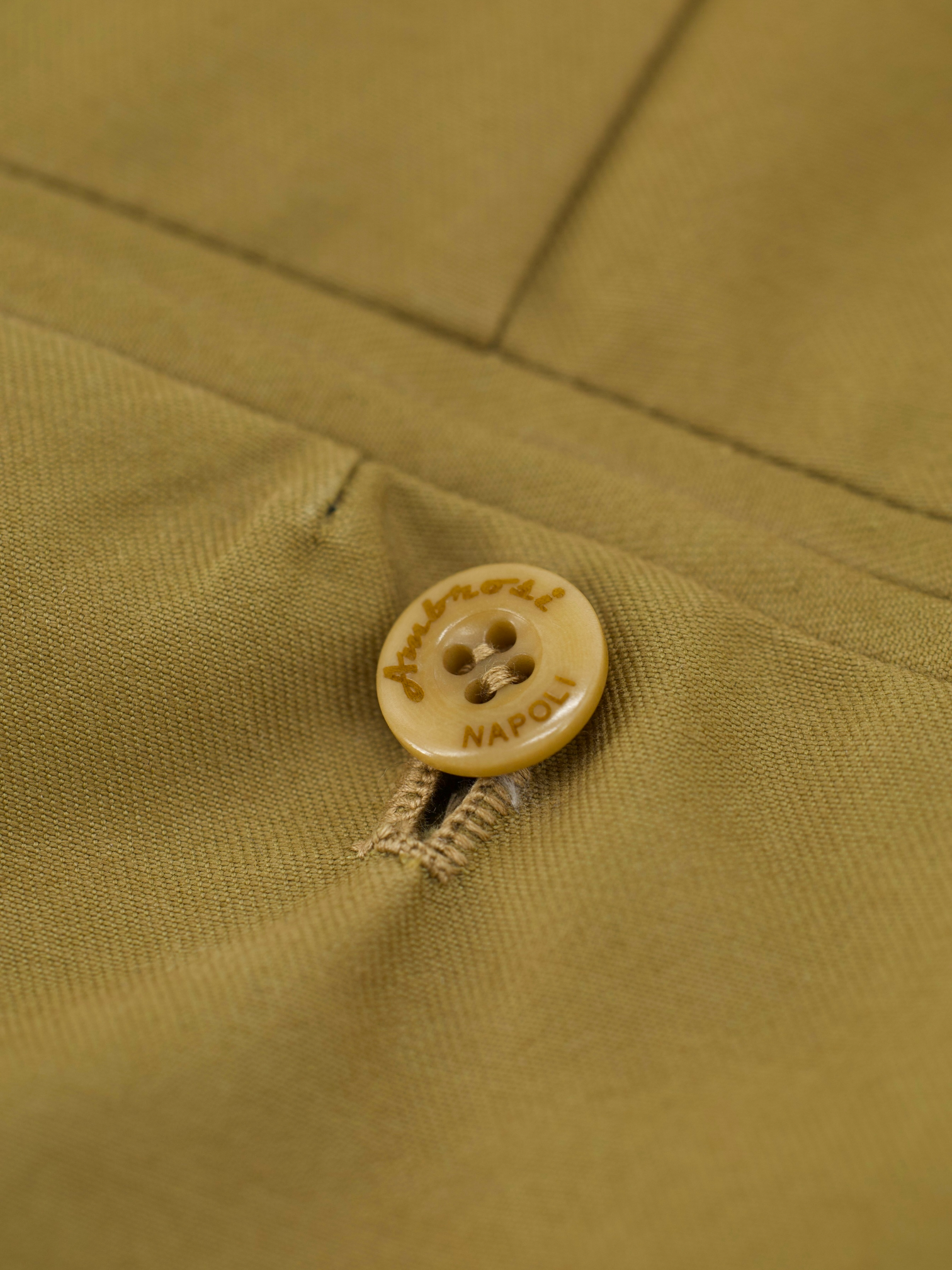
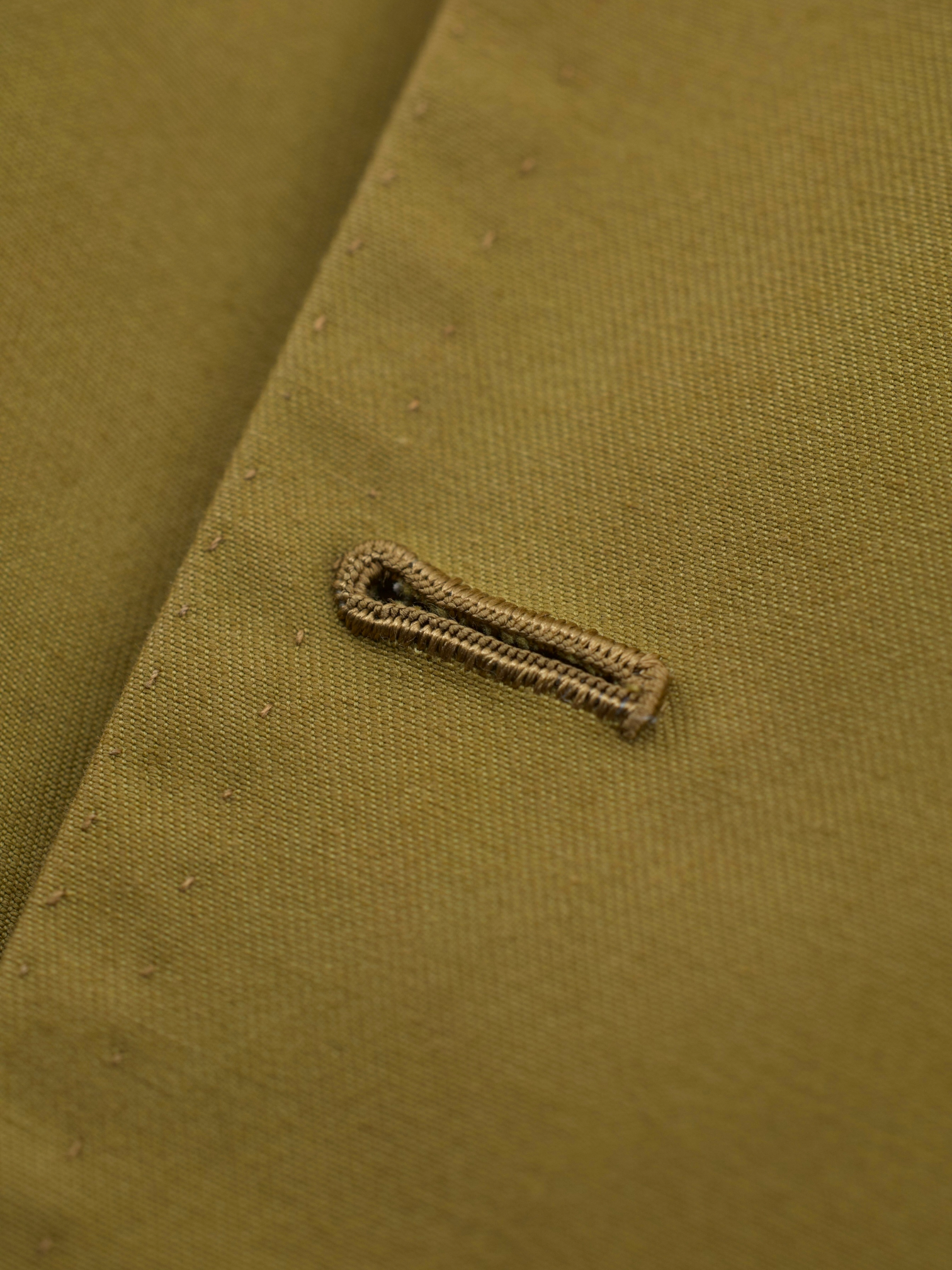
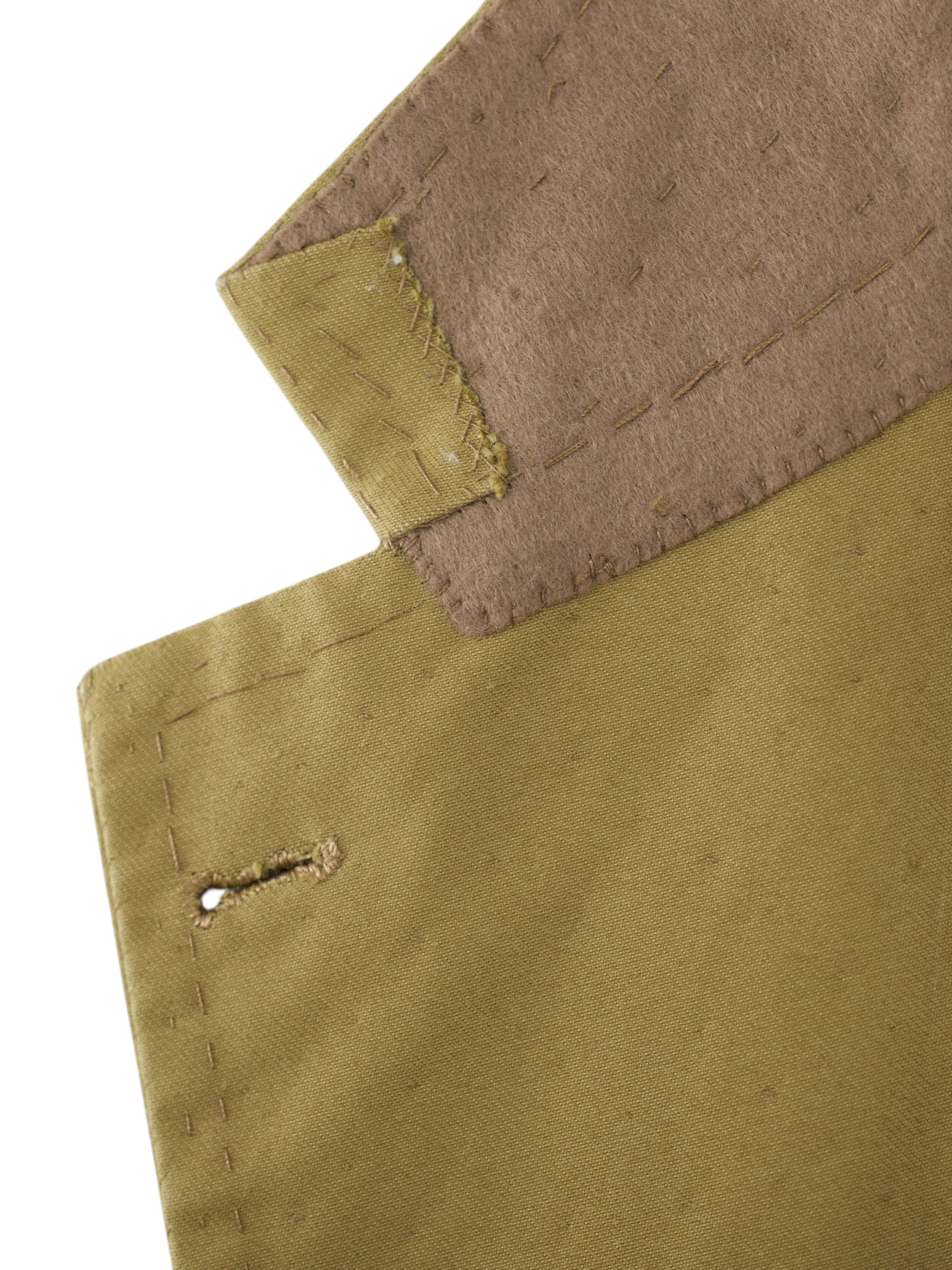
Sartoria Formosa x Ambrosi Honey Heavy-Cotton Twill Neapolitan Suit
54 IT / 44 US / Extra Large
Discover the Sartoria Formosa x Ambrosi Honey Heavy-Cotton Twill Neapolitan Suit, a sunlit statement rendered in robust, tactile elegance. The jacket, cut by Sartoria Formosa, features the soft spalla camicia shoulder, a cleanly rolled notch lapel, and open quarters that embody the ease of Neapolitan tailoring. Paired with trousers by Ambrosi, renowned for their sculpted fit and meticulous hand-finishing, the suit is crafted from a heavyweight cotton twill woven by Brisbane Moss. The vivid honey tone lends it a striking presence, spirited yet sophisticated, making it ideal for those who favour bold colour grounded in impeccable craft.
Sartoria Formosa, one of Naples’ most respected bespoke houses, is celebrated for its light, natural construction and balanced proportions, while Ambrosi is the city’s premier trouser maker, known for their exacting cut, deep single pleats, and precise handwork. Here, both artisans apply their mastery to Brisbane Moss’s heavy cotton twill, a fabric prized for its durability, structure, and rich handle. Every stage, from the hand-shaped lapel to the individually cut waistband, is executed entirely by hand, resulting in a suit that marries two strands of Neapolitan excellence into one cohesive whole. Discover the elaborated sartorial details below.
Composition: 100% Cotton
Color: Vivid Honey Brown
Pattern: Keperbinding
See how we measure our sartorial items
Discover the customization possibilities by visiting our tailor alteration guide
Gratis verzending voor bestellingen boven de 200€ in Nederland, 500€ in de EU en 1000€ buiten de EU.
Verzendkosten voor bestellingen onder de minimumprijs zijn afhankelijk van je land.
General Note: While we inspect each item to ensure its quality, please note that minor imperfections may be present due to the preloved nature of the garments. We strive to represent every item accurately, but subtle signs of wear may sometimes go unnoticed. We appreciate your understanding and commitment to sustainable luxury.
Opties kiezen













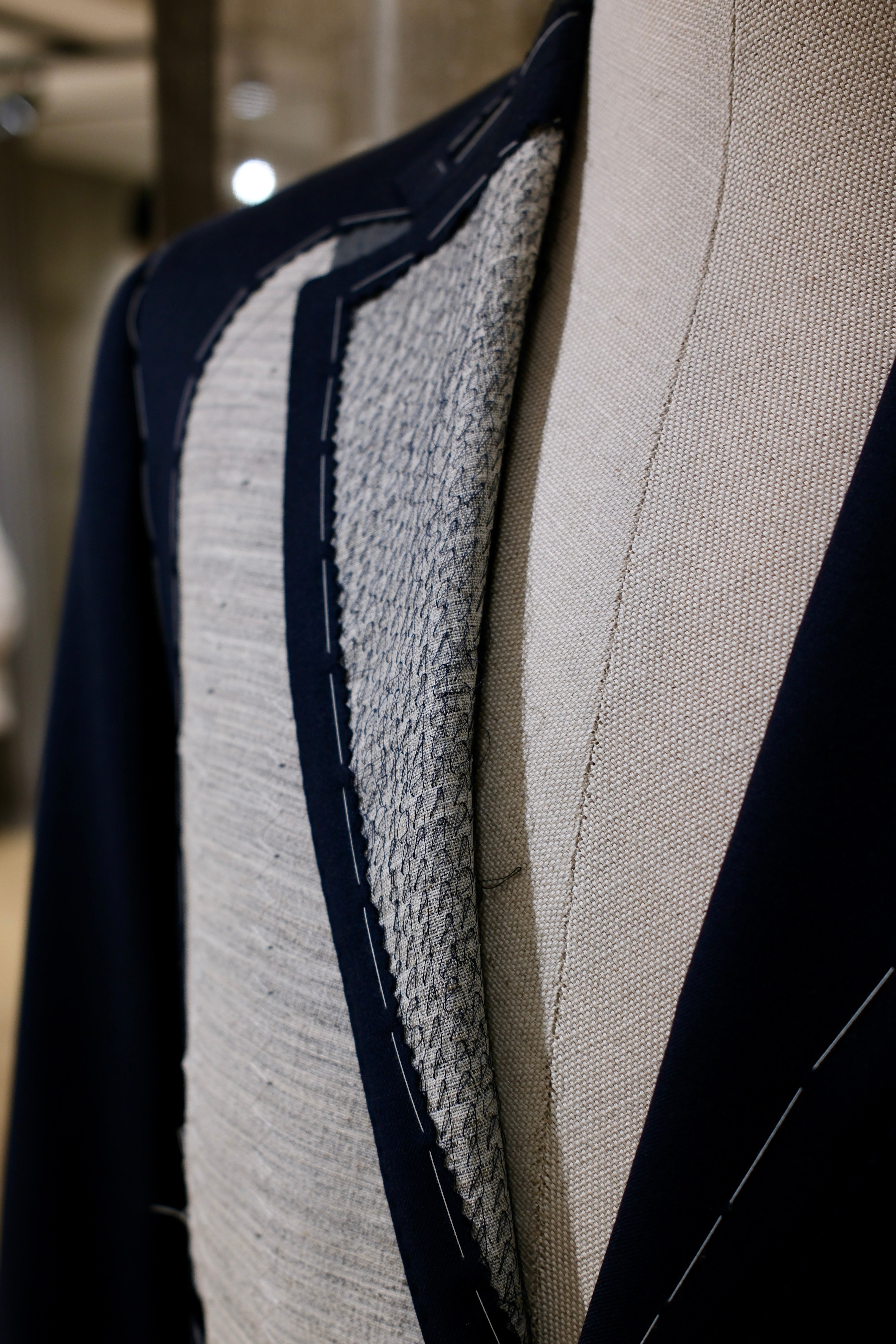
Ontdek de
Sartoriale Details

Full Canvas Constructie
Een sartoriale jas - of mantel - heeft een tussenvoering nodig die helpt om de vorm te geven en het te modelleren. Canvas geeft het item een op maat gemaakte en ambachtelijke uitstraling. Kortom, het brengt leven in het kledingstuk. Technisch gezien is canvas gemaakt van paardhaar, wol, mohair of kamelenhaar. Het kan ook een mix van deze materialen zijn, met variërende dikte en gewicht. De canvas wordt aan de jas gestikt, vaak met de hand, waardoor de canvasstukken 'zweven' tussen de binnen- en buitenstof. Dit geeft de jas extra flexibiliteit. De canvas loopt van de bovenste delen helemaal door tot het einde van de jas. Nadat je je canvasjas een tijd hebt gedragen, zal deze beginnen de vorm van je lichaam aan te nemen en er ongelooflijk natuurlijk uitzien.
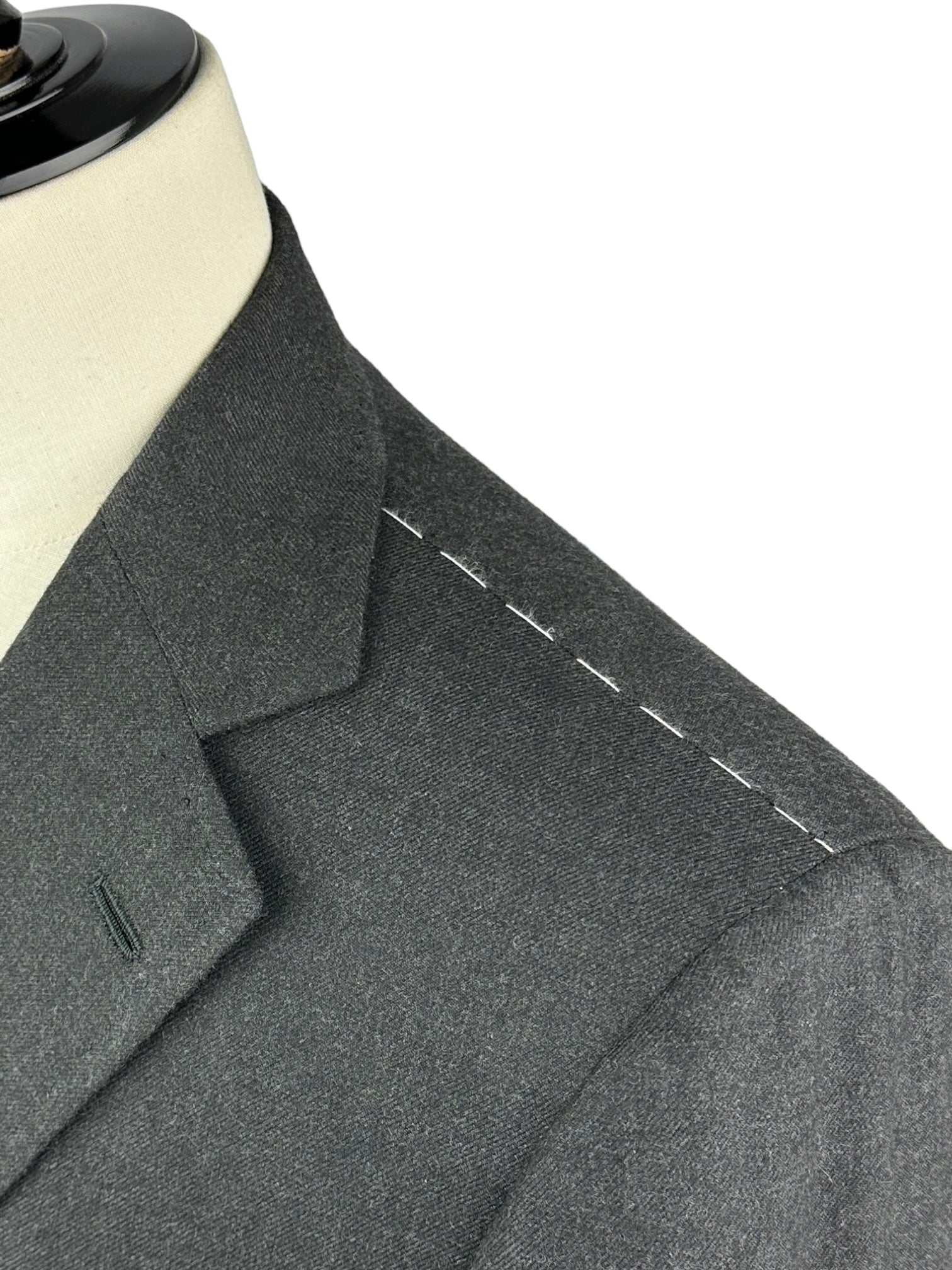
La Spalla Camicia
"Spalla Camicia" vertaalt zich ruwweg naar 'overhemd mouw' in het Italiaans en is een schouderstijl gecreëerd en populair gemaakt door Neapolitaanse kleermakers. De naam 'overhemdmouw' werd zo genoemd vanwege het karakteristieke gerimpelde effect dat te vinden is bij de kop van de mouw, waar de volheid van de grotere mouw in elkaar zakt. In plaats van de kop van de mouw naar achteren te vouwen en binnenstebuiten te stikken, wordt de kop ondergeschoven en langs de bovenkant gestikt.
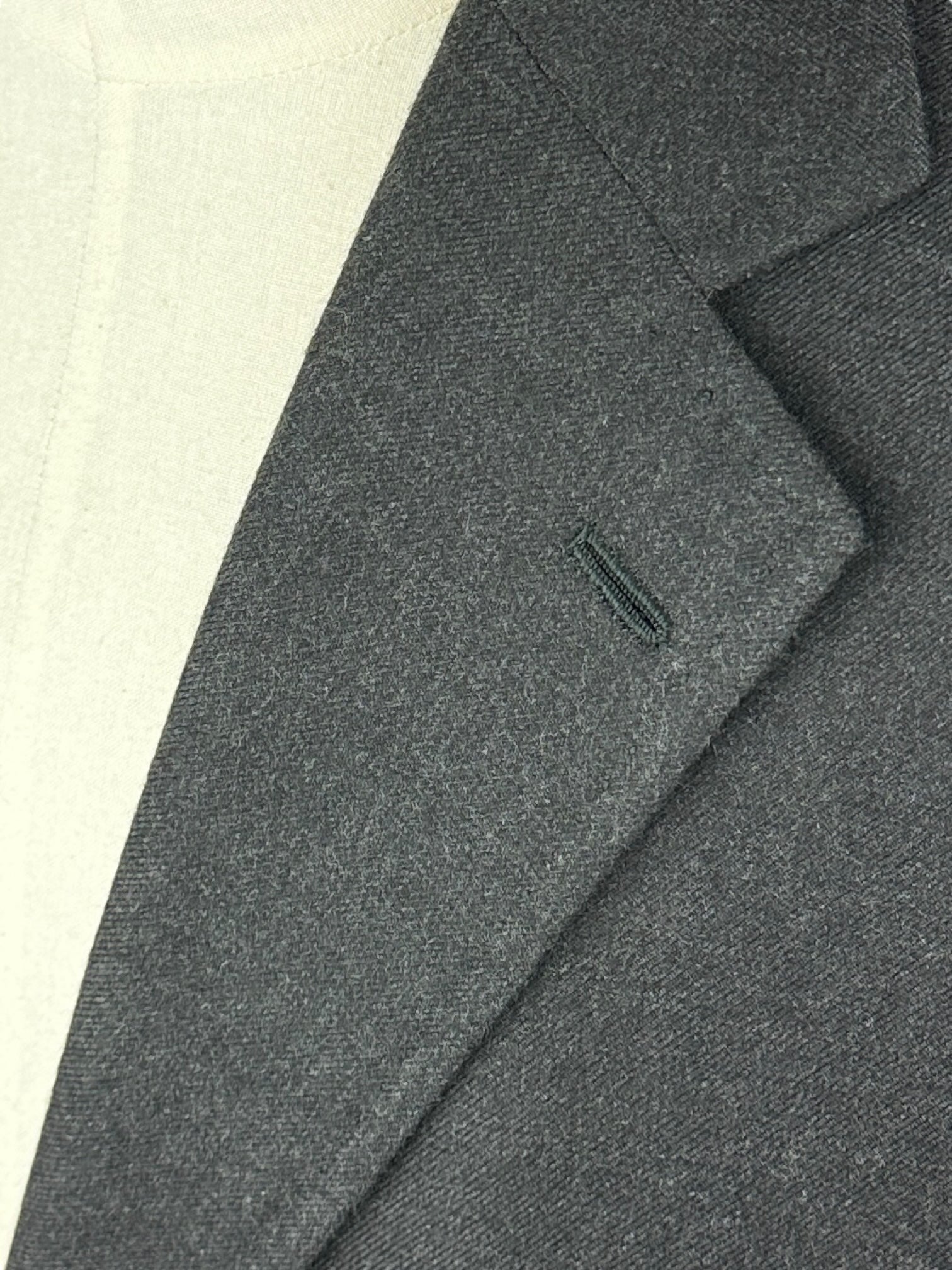
Handgemaakt Knoopsgat
Handgemaakte knoopsgaten worden gemaakt met behulp van een ketting van geknoopte lussen, genaamd festonsteken, die ze sterk en visueel onderscheidend maken. Het duurt ongeveer vijf seconden om met een machine een normaal knoopsgat te naaien - een enkel handgemaakt knoopsgat kost ongeveer 10 minuten om te naaien.
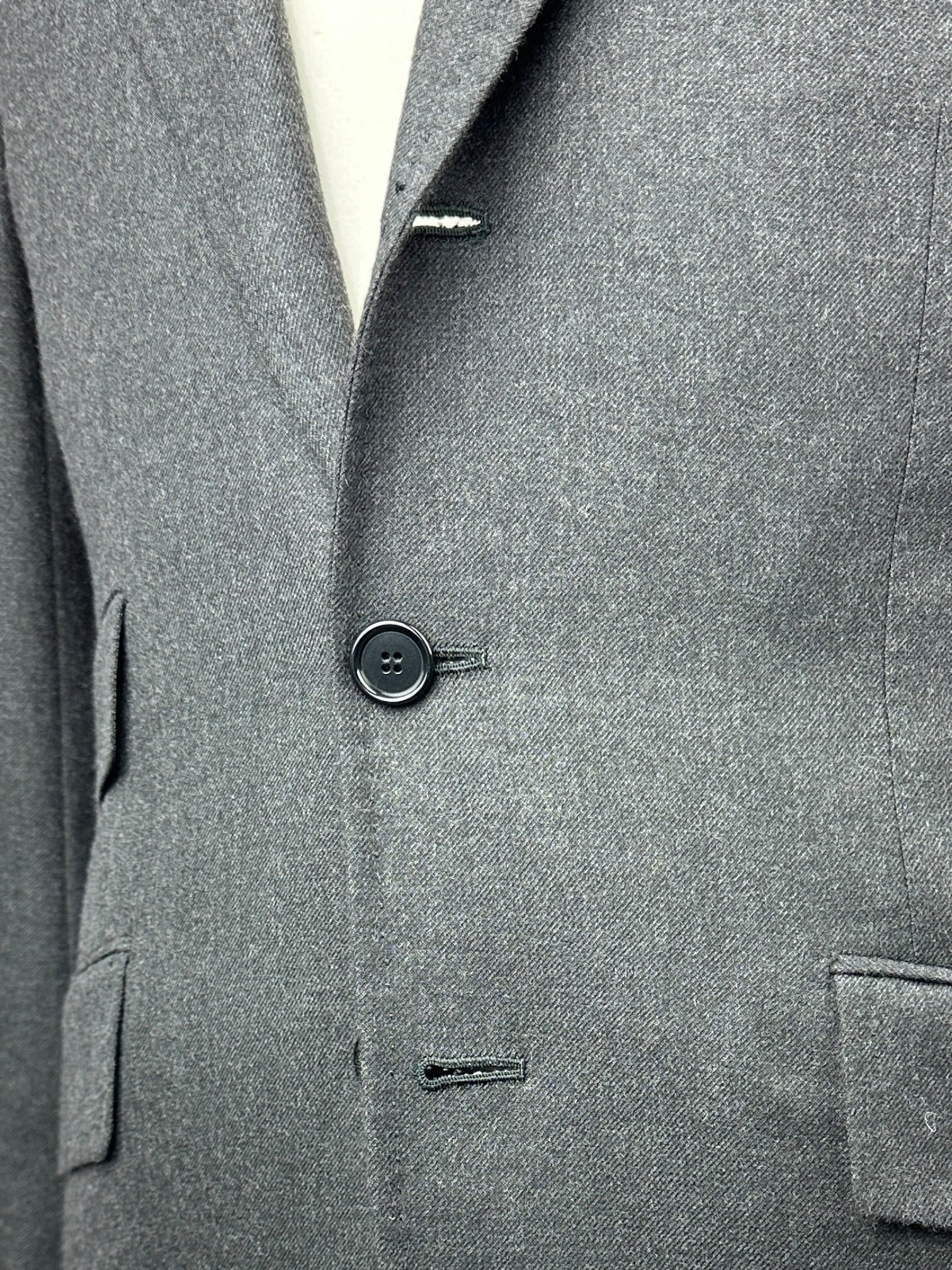
2.5 Knoops Sluiting
De 'tre bottoni stirato a due', ook bekend als de drie rollend op twee reversstijl, is misschien wel het meest beruchte kenmerk van het Neapolitaanse stijl jasje. De bovenste knoop en knoopsgat zijn decoratief, dus blijven ongeknoopt. Terwijl de revers omlaag rolt, vouwt het elegant over de bovenste knoop en stopt net 4 cm boven de tweede knoop, wat de kenmerkende rol van de revers creëert waar de stijl om bekend staat. Omdat het bedoeld is om ongeknoopt te blijven, wordt het bovenste knoopsgat eigenlijk binnenstebuiten gemaakt, zodat de mooie kant nog steeds zichtbaar is.
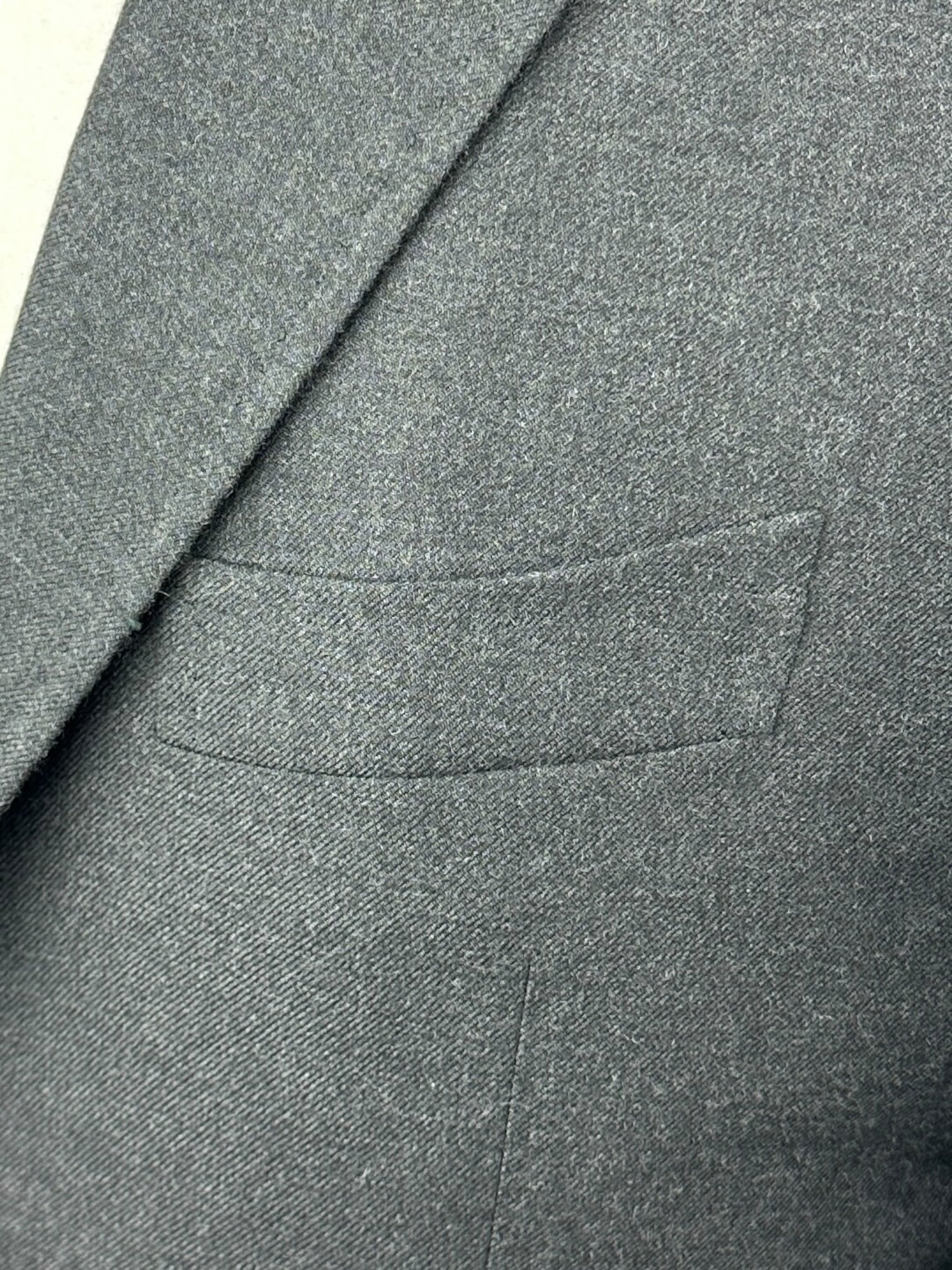
Barchetta Borstzak
De barchetta-zak wordt vaak beschouwd als een kleermakersdetail dat exclusief uit Italië komt. Het woord "barchetta" is Italiaans voor "bootje". Het beschrijft hoe de zak op de borst zweeft, lichtjes omhoog gericht, zoals de boeg van een zeilboot.
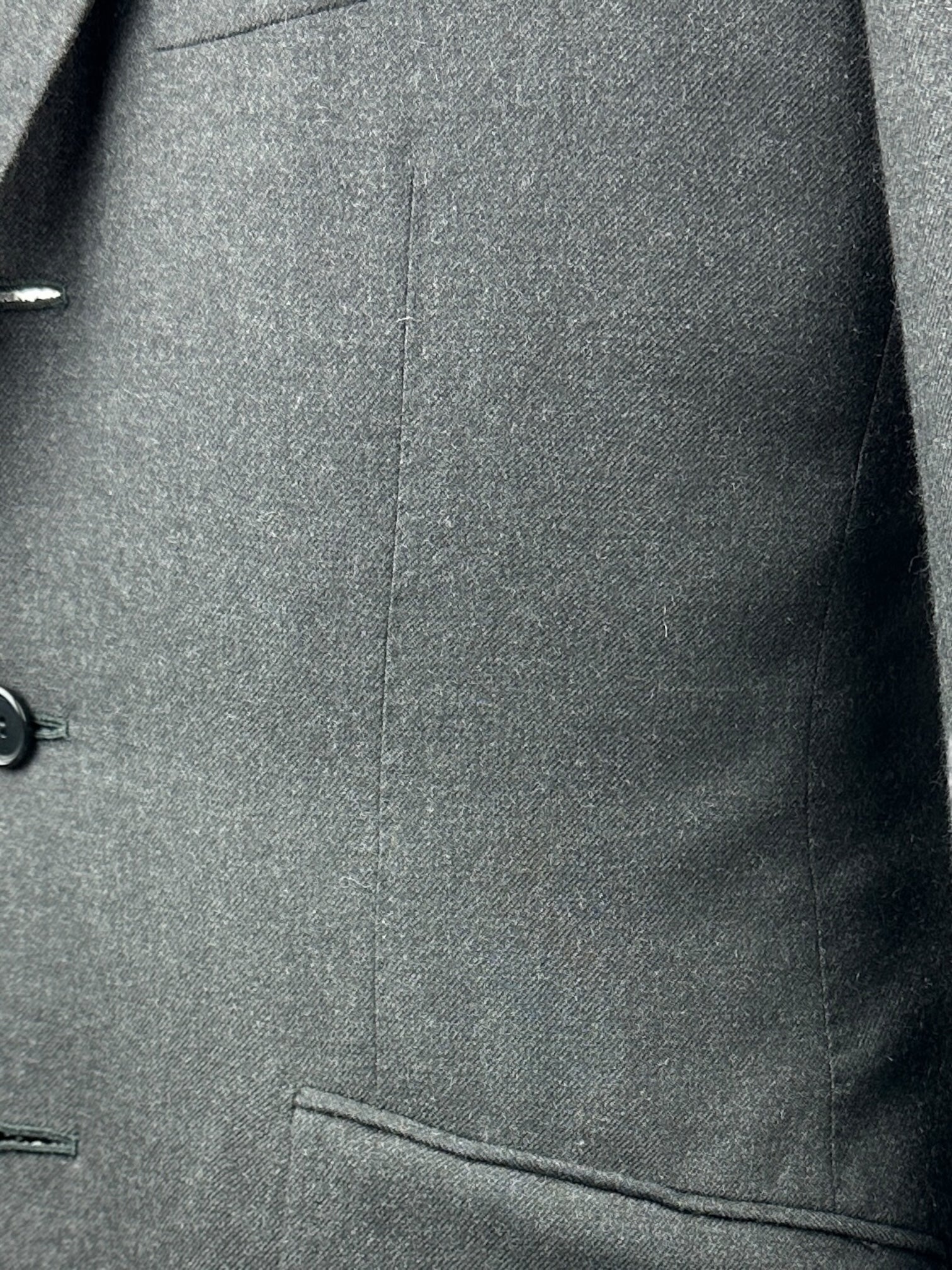
Naden
De kleermaker voegt twee figuurnaden toe - denk aan ze als ingeknepen naden - om ervoor te zorgen dat het lichaam van het jasje een slank silhouet krijgt. Het proces, genaamd "mezzo punto riprese", wordt volledig met de hand uitgevoerd.
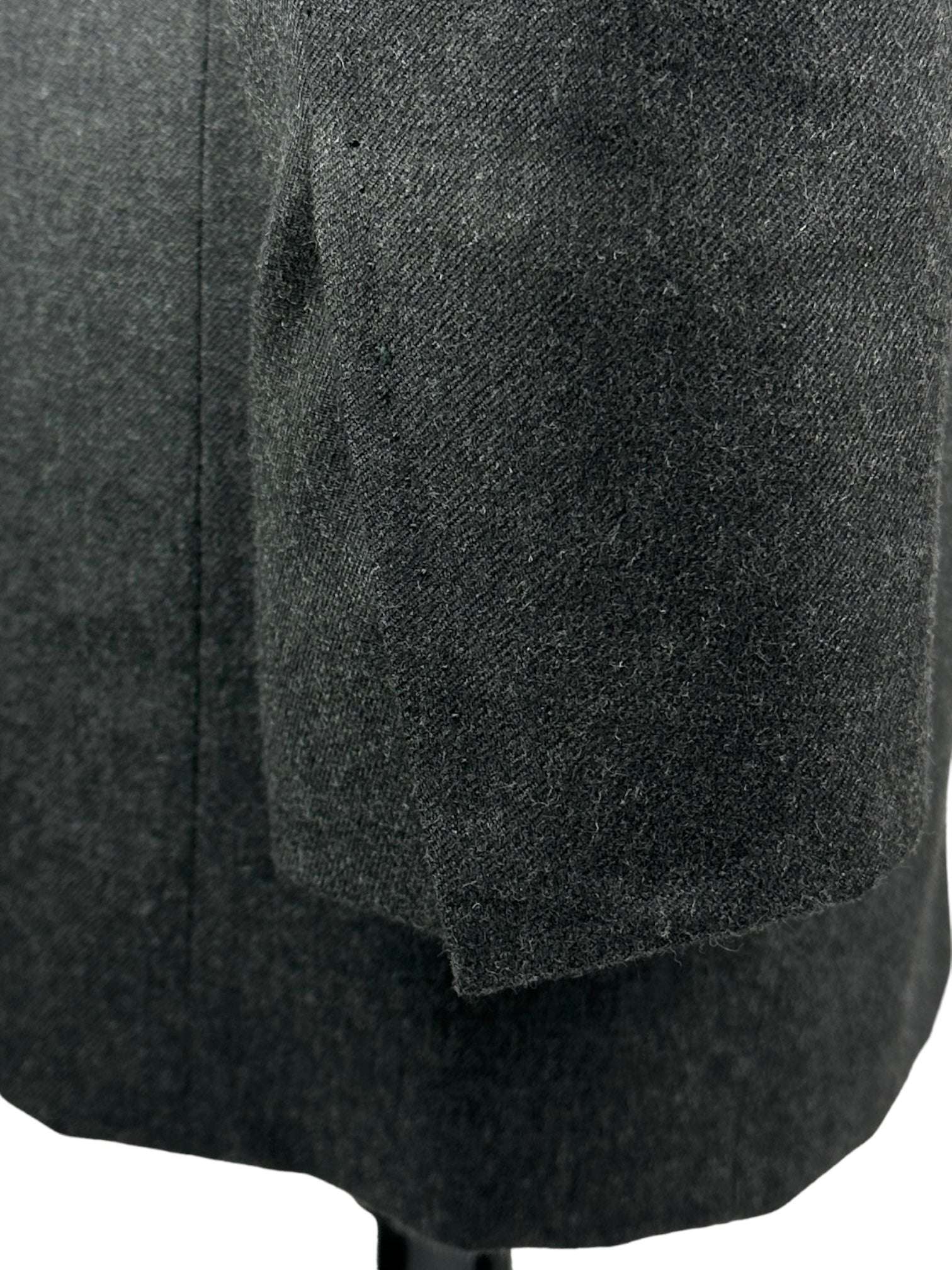
Kissing Buttons en Handgemaakte Knoopsgaten
Ook bekend als 'stacked buttons' of 'waterfall buttons', worden 'kissing buttons' geassocieerd met Italiaans kleermakerswerk, aangezien Italiaanse kleermakers hun jasjesmouwknoopjes in de 'kissing'-stijl maken. In deze stijl raken de knoopjes elkaar en overlappen ze elkaar. Handgemaakte knoopsgaten; Zelfs deze stap, schijnbaar de eenvoudigste, wordt behandeld met een overvloed aan details. Het bevestigen van de knoopjes is een klus die geduld vereist en perfectie moet worden afgerond.
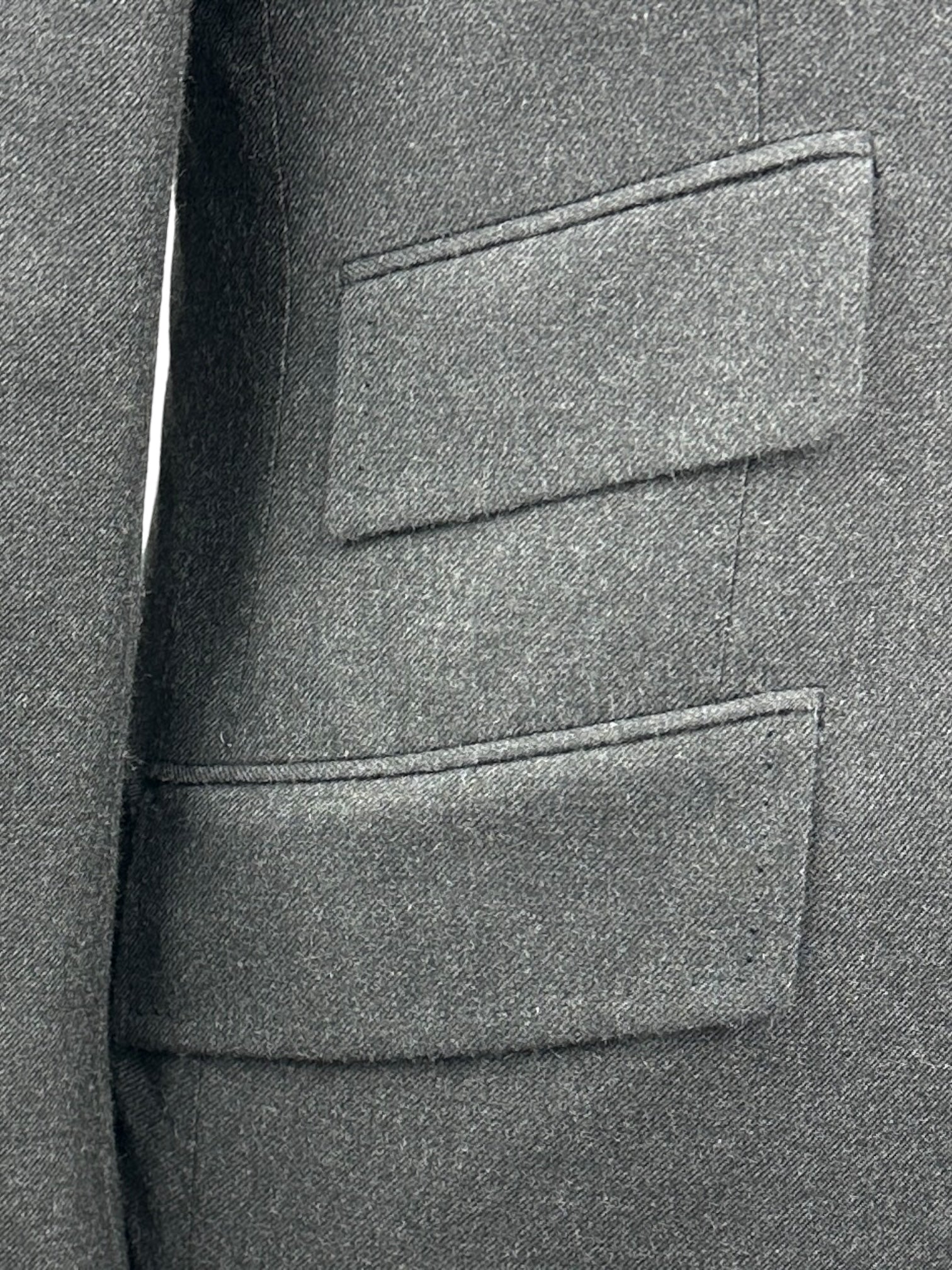
Opgestikte Zak
De ticketzak, ook bekend als wisselgeldzakje, heeft een oude Britse geschiedenis. In eerste instantie werd het niet eens gebruikt om een ticket in op te bergen, zoals de naam vandaag de dag aangeeft. Het werd handig voordat de spoorwegen enorm populair werden, omdat het werd geplaatst op de jassen van ruiters die snel toegang nodig hadden tot munten bij tolpunten. Door heren in staat te stellen hun jassen dichtgeknoopt te houden, hield deze externe zak contant geld op een uiterst handige manier vast. Ticketzakken waren een vast onderdeel van stevige landelijke kostuums voor mannen voordat ze werden aangepast voor de stedelijke kostuums die mannen dagelijks droegen om te pendelen.
de details van
de broek
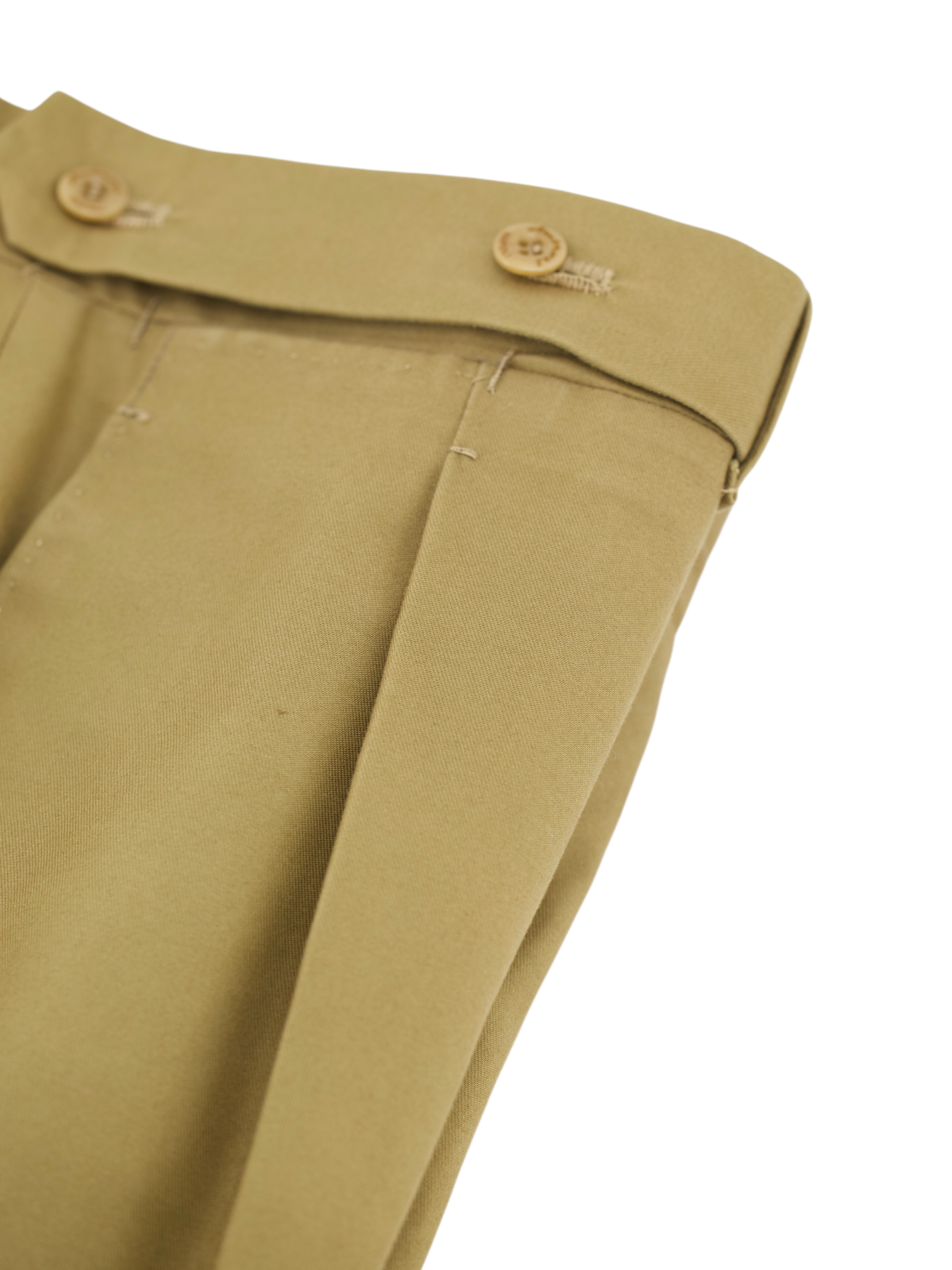
Double Pleated Front
Double-pleat trousers are all about classic elegance. They were a staple in the 1930s and 1940s, an era known for its fuller, more comfortable styles. With two pleats, these pants provide extra room, especially around the hips and thighs, making them great for formal settings. They bring to mind the sophisticated styles of Hollywood icons like Cary Grant, who wore them with effortless charm. Even though slimmer fits have become more popular, double pleats remain appealing for those who appreciate traditional tailoring and timeless style.

Extended Tab
The extended tab waistband is a classic detail that adds a touch of elegance to trousers. This style features an extra piece of fabric that extends beyond the regular waistband and fastens with a button or hook. The extended tab provides additional security and a neat finish, making it a popular choice for dress pants and tailored trousers. It creates a streamlined appearance, eliminating the need for a belt and allowing the waistband to lie flat against the body.
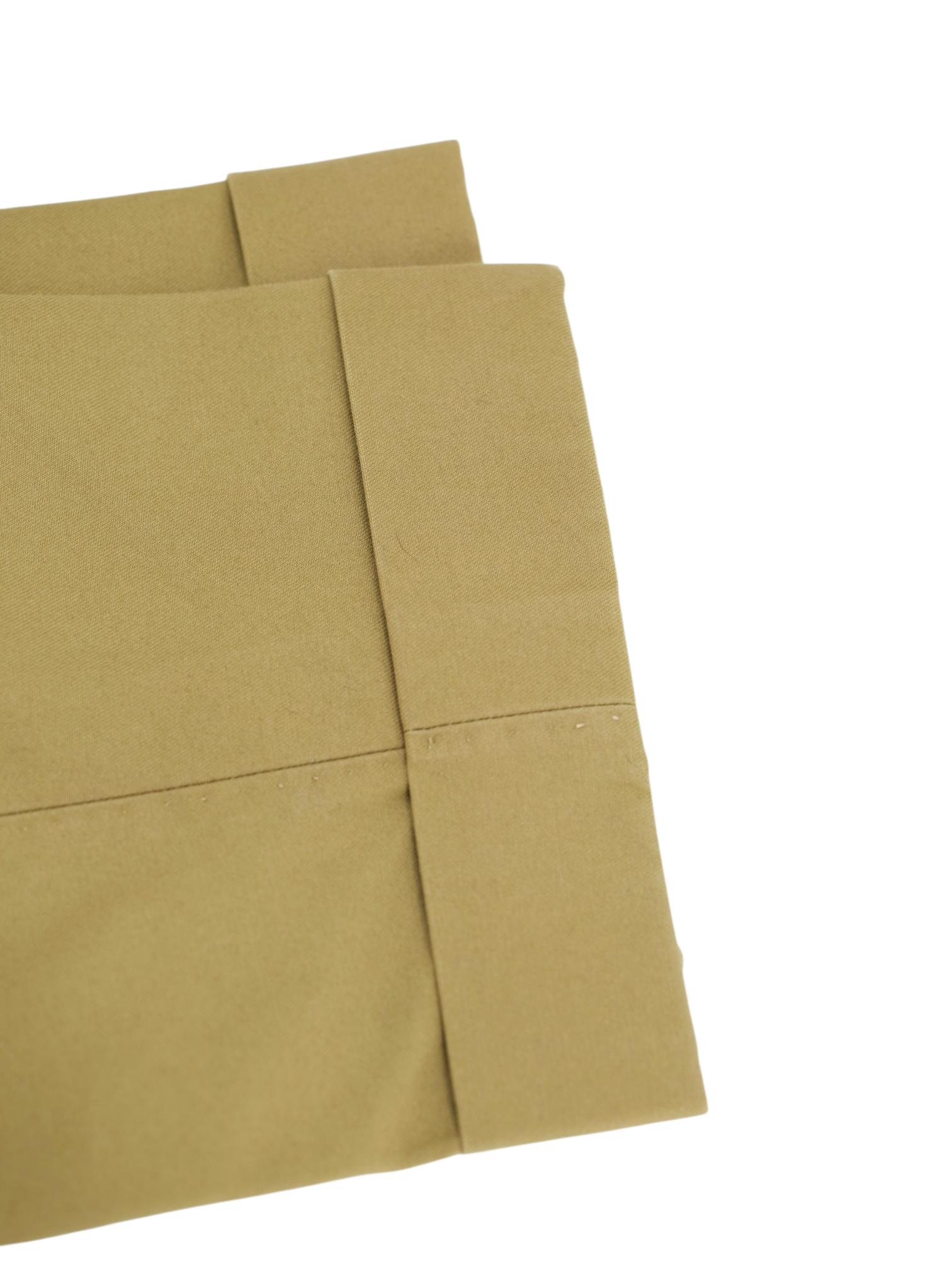
Turn-Up (Cuffed) Hem
The turn-up hem, or cuffed hem, is a classic style where the fabric at the bottom of the trousers is folded outward to create a visible cuff. This style originated with Edward VII in the late 19th century, who had his trousers tailored with cuffs to prevent them from getting muddy, sparking a trend among the fashionable elite. In the 1920s and 1930s, turn-ups became a symbol of wealth and sophistication, as having extra fabric was seen as a luxury. This association continued after World War II when wearing turn-ups subtly indicated affluence in an era of fabric rationing. Today, turn-up hems are a nod to their historical roots, offering a touch of classic elegance and enhancing the overall appearance of formal and tailored trousers.
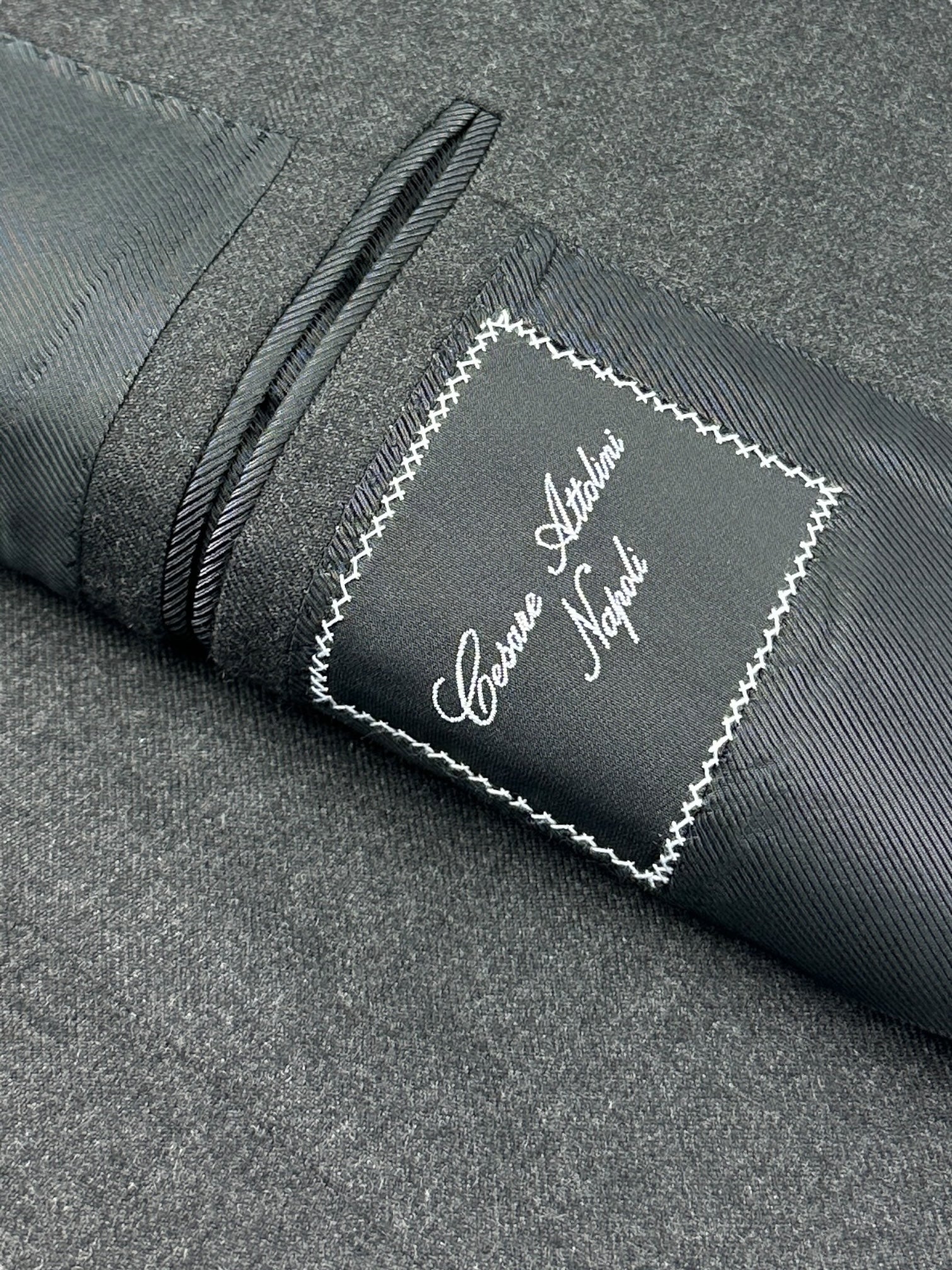

maat
54 IT / 44 US / Extra Large


 Curator's Description
Curator's Description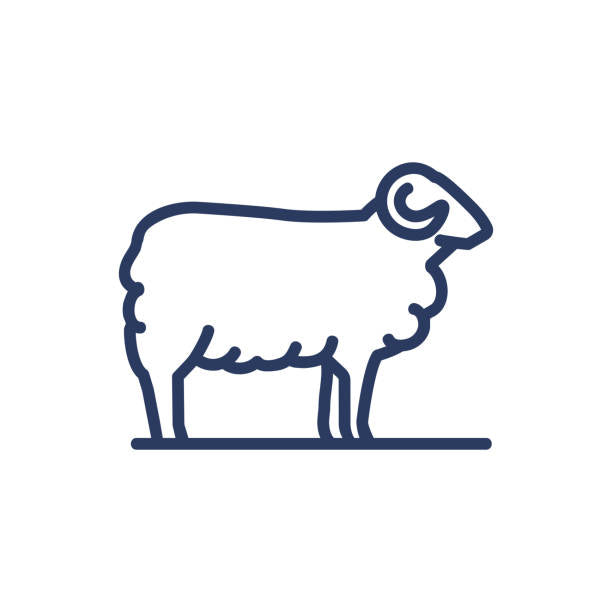 Materialen
Materialen